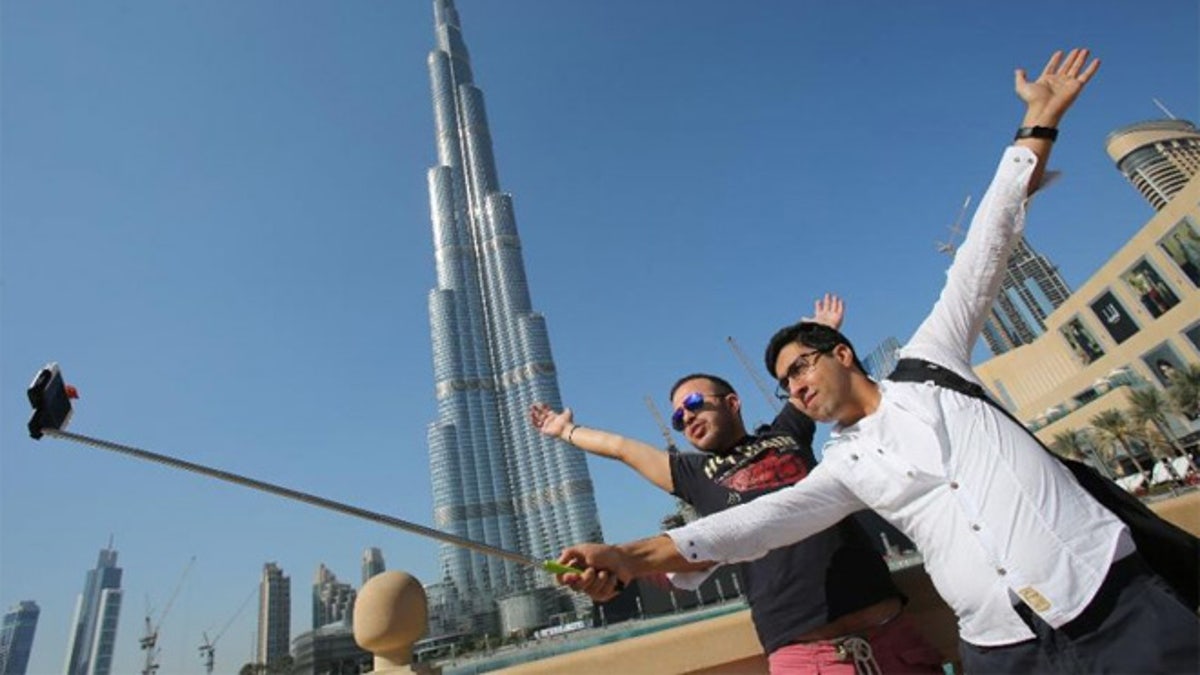
As more people take and share photos with selfie sticks, the interest in travel has spiked. But the culture of selfies screams “me” -- not “look at that amazing site. (AP)
Wimbledon is the latest in a growing list of global destinations that are barring the use of the self-portrait selfie-stick.
Organizers of the tennis tournament gave the reason for its "nuisance value" but "primarily so it doesn't interfere with spectators' enjoyment."
This follows decisions made for other upcoming events, such as the Kentucky Derby and Apple’s upcoming Worldwide Developers Conference in California.
Selfie sticks are getting a bad rap, as narcissistic travelers focus on their phones, snapping selfies, and sharing them on social media. It’s something I wrote about last year when the device was starting to emerge.
And today it’s only getting worse.
The Selfie Stick Comes of Age
The history of the selfie stick dates back to 1980s when Hiroshi Ueda, a Japanese photographer from Minolta, was struggling to find a way to take a picture of him and his wife on their European vacation. Ueda filed a patent for what he called an “extender stick,” which was published by the U.S. patent office in 1985.
Compared to the clunky cameras back then, today’s slimed down devices have front and back-facing digital displays that allow you to easily to frame up yourself and your background to get your shot.
And while being available in the U.S. since 2011, selfie sticks have been popping up in droves within the past 12 months.
How It’s Changing Travel- The Good, Bad and the Ugly
First the good: Selfie sticks can be a convenience. If you live anywhere that you find tourists, the once-inevitable request to take someone’s picture for them is no longer a given. Or if you travel, you may not have passersby to help you out. The selfie stick does its part in making sure individuals aren’t disrupting anyone else as they document their travels.
As more people take and share photos using selfie sticks, the interest in travel has spiked, which is another good thing.
But its culture screams “me” -- not “look at that amazing site.” A traveler’s thoughts in words and how they are feeling at that moment is preferable to seeing someone’s head proclaiming their arrival at a particular destination.
And is the person doing the picture taking really getting that experience himself or herself? Travel is about experiences first, recording the event second. Stepping foot on a piece of land, and having your passport stamped before you get back on board a boat or plane, isn’t travel. Taking a picture of yourself to document that you, yes you, were actually there, isn’t either.
More From TravelPulse
Now's the Perfect Time For a Caribbean Getaway with These Great Deals
Myrtle Beach: More than Just the Best Golf Destination in the South
Top Hotels on St. Vincent and the Grenadines
4 Ways To Capture Adventure In St. Kitts
